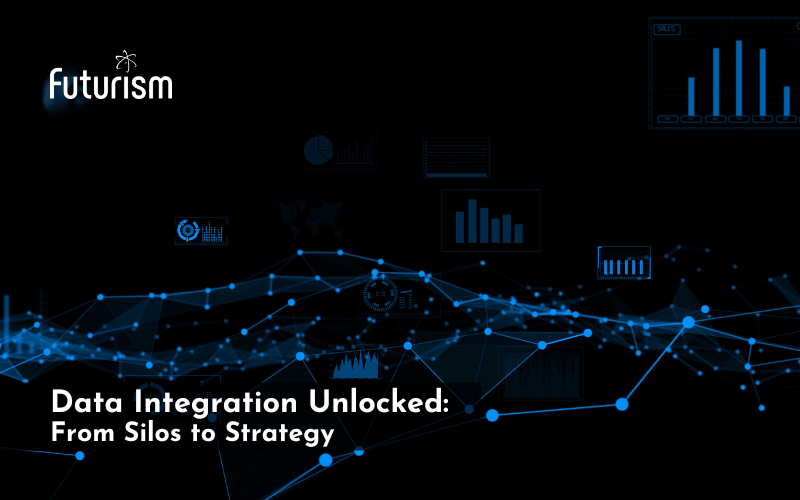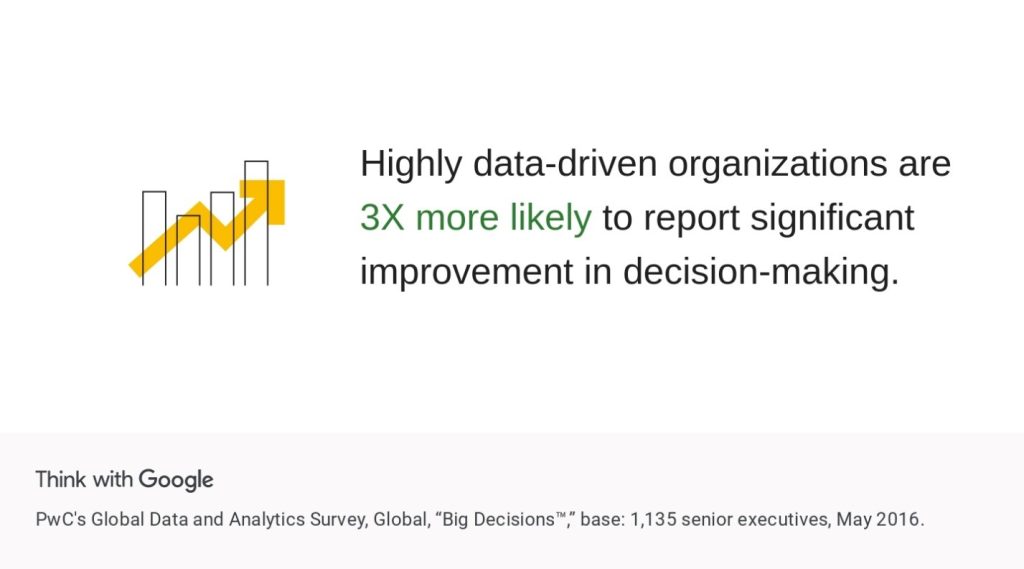Data Integration Unlocked: From Silos to Strategy for Competitive Success

Futurism Technologies
March 12, 2024 - 2.2K
5 Min Read
Imagine if your business data were trapped on isolated islands, unable to communicate. That’s the reality for many companies struggling with “siloed” information. This scattered data makes it hard to run things smoothly and limits your ability to be creative. But there’s good news! Data integration is now easier than ever, thanks to smart strategies powered by AI. This blog explores various ways to seamlessly connect your data, transforming it into a powerful, unified asset. Using these strategies can help your business unleash its data’s full potential, keeping you ahead of the competition and at the forefront of efficiency and innovation.

Read also: How AI Is Turning Data Into Dollars?
Understanding Data Integration
Data integration is the critical process of merging information from diverse sources into a unified and valuable data warehouse or system. This is essential in today’s business landscape, where decision-makers rely on accurate, timely data for devising effective strategies. AI and Machine Learning have revolutionized data integration by automating and improving the speed, efficiency, accuracy, and adaptability of the process, providing businesses with actionable insights.
Beyond data consolidation, data integration is central to digital transformation initiatives. Breaking down data silos enables organizations to gain a comprehensive view of operations, customer behaviors, and market trends. This integrated data ecosystem supports advanced analytics, predictive models, and informed decision-making.
AI-enhanced data integration not only automates routine tasks, reducing human error, but also frees up resources for more strategic initiatives. As digital transformation progresses, seamless integration across platforms becomes crucial for an organization’s competitiveness and agility. At Futurism Technologies, we use cutting-edge AI to provide robust data science and integration solutions, empowering businesses in navigating the complexities of digital transformation and ensuring streamlined operations and enhanced decision-making.
Read also: Why Data Engineering Is Key to Digital Transformation?
Data Integration: The Keystone of Digital Transformation
- The Essence of Data Integration: Data integration is not just about moving data from Point A to Point B; it’s about transforming disparate data streams into a unified, coherent whole. It serves as the backbone of modern enterprises, enabling them to view their data landscape through a single pane of glass. This unified data view is crucial for businesses aiming to make informed decisions, drive strategies, and enhance operational efficiencies.
- AI-Enhanced Data Integration: The integration of AI into data processes has revolutionized the way businesses handle their data. AI-enabled data integration tools automate the process, significantly reducing manual labor and the potential for human error. These tools are capable of processing vast amounts of data at unprecedented speeds, ensuring that businesses have access to real-time insights for quick decision-making. Moreover, AI algorithms can identify patterns and anomalies in data, enhancing the accuracy and usefulness of the integrated data.
- The Impact on Digital Transformation: Data integration is at the heart of digital transformation, allowing businesses to leverage their data assets fully. By breaking down silos, organizations gain a 360-degree view of their operations, customer interactions, and market dynamics. This holistic perspective is vital for powering advanced data analytics, driving predictive modeling, and fostering informed decision-making. In a digital-first world, the ability to integrate and analyze data effectively sets the stage for innovation and competitive advantage.
Data Integration Strategies for Seamless Operations
- Batch Integration: Batch Integration involves compiling data at scheduled intervals, processing it in large batches. This strategy is ideal for scenarios where real-time data is not critical, allowing for efficient resource utilization and minimizing the impact on system performance. Batch processing is particularly beneficial for end-of-day financial reconciliations or monthly reporting, providing a cost-effective solution for data integration needs.
- Real-Time Integration: Real-time data integration ensures that data is available immediately as it is generated. This approach is crucial for applications requiring up-to-the-minute data, such as stock trading platforms or real-time analytics in eCommerce. Real-time integration offers businesses the agility to respond swiftly to market changes, enhancing customer experiences and operational decision-making.
- API-Led Connectivity: API-led connectivity uses application programming interfaces (APIs) as the channel for integrating data across different systems and platforms. This method offers unparalleled flexibility, allowing businesses to easily connect disparate systems without extensive custom coding. API-led connectivity is essential for creating a seamless ecosystem of applications, services, and data sources, enabling scalability and innovation.
- Cloud-Based Integration: Cloud-based integration offers a scalable and flexible approach to data integration, leveraging the cloud’s power to connect various applications and datasets. This strategy supports the integration of on-premise and cloud-based systems, facilitating data flow across the entire digital landscape. Cloud-based integration solutions are particularly advantageous for businesses looking to scale quickly, offering cost-effective, efficient, and secure data integration capabilities.
The Benefits of Effective Data Integration
Data integration is more than a technical necessity; it’s a strategic enabler of seamless operations, enhanced decision-making, and superior customer experiences. By effectively leveraging data integration strategies, businesses can unlock a wealth of benefits that drive competitive advantage and operational excellence.
1. Enhanced Decision-Making
Unified data for comprehensive insights. Effective data integration consolidates disparate data sources into a single, coherent view, providing businesses with comprehensive insights into their operations, market trends, and customer behaviors. This unified data foundation supports advanced analytics and business intelligence efforts, enabling leaders to make informed decisions based on a holistic understanding of their business ecosystem.
Agility in response to market changes. With real-time or near-real-time data integration, organizations can quickly adapt to market changes. This agility is crucial in today’s fast-paced business environment, where the ability to respond promptly to emerging trends, customer needs, and competitive threats can make the difference between success and failure.
2. Operational Efficiency and Agility
Streamlining business processes. Data integration automates and simplifies the process of consolidating data from multiple sources, reducing manual efforts and minimizing errors. This streamlining of data processes enhances operational efficiency, allowing businesses to allocate resources more effectively and focus on strategic initiatives.
Supporting scalability. As businesses grow, so does the complexity of their data landscapes. Effective data integration strategies, particularly cloud-based solutions, provide the scalability needed to accommodate this growth. By enabling seamless integration of new data sources and systems, businesses can expand their operations without being hampered by data silos or integration bottlenecks.
3. Better Customer Experiences
Personalized customer interactions. Integrated data provides a 360-degree view of the customer, enabling businesses to tailor their offerings and interactions based on comprehensive customer insights. This personalization enhances customer satisfaction and loyalty, driving repeat business and positive word-of-mouth.
Read also: Achieving eCommerce Personalization with AI
Real-time customer service. Real-time data integration allows businesses to offer prompt and informed customer service, addressing inquiries and resolving issues with speed and accuracy. This responsiveness improves the overall customer experience, setting the business apart from competitors.
Implementing Data Integration in Your Business
Choosing the right data integration strategy requires a careful assessment of your business needs, data landscape, and operational objectives. Whether it’s batch processing for efficiency, real-time integration for agility, API-led connectivity for flexibility, or cloud-based solutions for scalability, the key is to select the approach that best aligns with your goals.
Futurism Technologies, with its expertise in AI-enabled data integration, can be your partner in this journey. By understanding your unique challenges and opportunities, we can tailor a data integration solution that not only meets your current needs but also positions you for future growth and innovation.
Conclusion
Unlocking the power of your data through smart integration strategies isn’t just a nice-to-have, it’s a must-have. Better decisions, happier customers, and the ability to squeeze every drop of value from your information – that’s what effective data integration delivers.
Subscribe Now!
TRENDING POSTS
-
Futurism Returns to Hannover Messe 2024: Leading the Charge in Industrial and Digital Transformation
-
The Role of Smart Maritime IoT Solutions in Enhancing Maritime Safety
-
Data Integration Unlocked: From Silos to Strategy for Competitive Success
-
Navigating the Shadows: Understanding Zero-Click Attacks in the Digital Age
-
AI Reimagined: Crafting Next-Gen AI Apps with Expert Fine-Tuning
-
Explore Next-Gen Digital Solutions with Futurism at MWC 2024
-
Futurism Unleashes the Technology of Tomorrow at MWC Barcelona 2024
-
Futurism AI: Turning Ideas into Apps at Lightning-Fast Speed
-
Accelerate AI Across Your Enterprise With Futurism AI
-
Futurism to Address the Biggest Security Challenges at RSS 2022
-
Futurism at SelectUSA 2022: Steering the Next Wave of Businesses
-
Futurism to Uplift the MSP Business Community at the MSP Expo 2022
-
Futurism Sets Out to Address the Biggest Security Challenges at the RSA Conference 2022
-
5 Ways to Prepare Your Business for Digital Transformation
-
4 Ways To Win at Digital Transformation on a Shoestring Budget
-
Futurism: Empowering MSPs at the Channel Partners Conference & Expo 2022
-
Why AI in Digital Marketing is the Next Big Thing?
-
Futurism brings ‘Mobile First Digital Transformation’ to the fore at MWC Barcelona 2022
-
Cybersecurity for Rural Hospitals: How can Rural Hospitals become Cyber Smart?
-
Futurism Empowers Rural Health Care Community at the AHA Rural Health Care Leadership Conference
-
The Biggest Problem With Cybersecurity In Healthcare Sector, And How IBM QRadar Can Fix It?
-
How IBM MaaS360 is Revolutionizing Endpoint Security in the Healthcare Industry?
-
Futurism to Present its MSP Partner Program at the Channel Partners Conference & Expo 2021
-
EndPoint Security in Healthcare Matters and IBM MaaS360 Can Help
-
How AI Will Enable Faster Adaptation of Digital Transformation
-
How Is Digital Modernization Important In Supplier On-Boarding?
-
Top 10 Email Marketing Tips for This Holiday Season
-
Benefits of using ERP Software for Energy and Gas Industries



